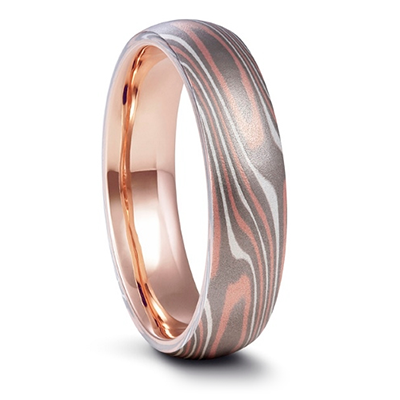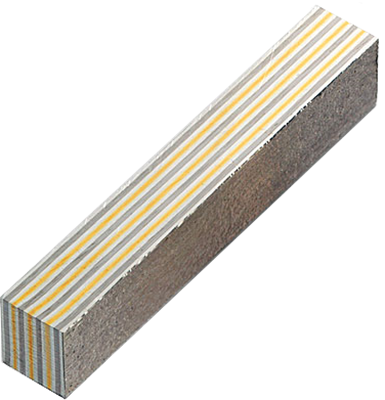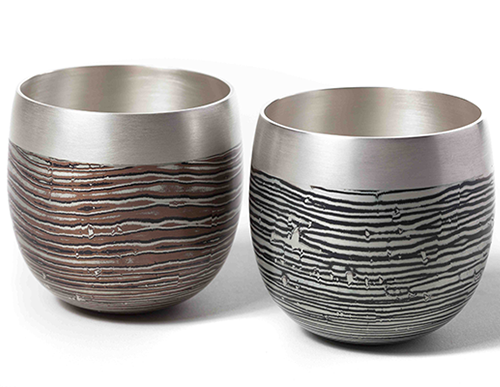MOKUMÉ-GANÉ
What is MOKUMÉ-GANÉ?
Mokumé-Gané is a smithing technique that involves layering two or more types of metal and bonding them together via fusion in order to create a solid block known as a "billet." This billet is then forged and manipulated in order to create a single piece of smooth metal stock that displays a wood grain pattern. From there, the stock can be used to make jewellery and other wares. The number of layers used while producing mokumé-gané will dictate the intensity of the the final pattern. Metals that are most often used to create mokumé-gané include gold, silver, platinum, palladium, copper, brass and nickel silver. Specialized alloys, such as shakudo and shibuichi, which are gold/copper and silver/copper combinations respectively, are also used in order to achieve varying shades of color from dark brown to light pink.


How is MOKUMÉ-GANÉ made?
Mokumé-Gané is our flagship technique. The specifics on how it is made is a secret that we hold close to our hearts. Very few goldsmiths in the world know how to produce it, and we are proud to be among them. Although there is very little that we can say about the process itself, we can assure you that each piece must be created by hand, from beginning to end. There is no such thing as a mold for producing mokumé-gané jewellery, as molds only replicate the shape of a piece and not the technique itself. Therefore, every piece of mokumé-gané jewellery that comes out of our studio has had dozens of hours of labor spent to produce the item. It is a labor of love and we cherish every moment of it. If you are interested in the technique and would like to have your very own, custom-designed piece, contact us.

Facts about MOKUMÉ-GANÉ
Mokumé-Gané is an ancient technique that can be traced back to Syrian antiquity as Damasus steel, which was used to produce high-quality swords. The process of combining carbon and steel led to the creation of a rigid, yet flexible blade that was not susceptible to shattering as normal blades were during that time. The technique was lost over the ages, and although the exact method of production is still unknown, the process was re-invented in Japan by master metalsmiths, whom used the technique to produce swords, decorative flatware and jewellery. For the latter two, precious metals were adopted over steel in order to produce highly-ornate pieces. Many alloys were also produced in Japan to achieve a wide array of colored metals. The technique of producing Damascus steel became known as mokumé-gané, which translates into English as "wood grain metal."
